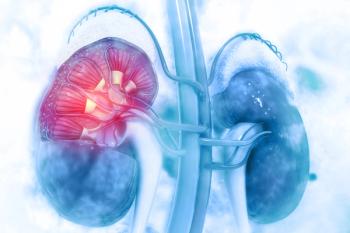
National Health Interview Survey Provides Early Insight Into Rates of Uninsured Americans
The National Center for Health Statistics has issued its early estimates from the National Health Interview Survey, conducted between January and June 2017. The report presents selected estimates, based on data for 39,480 people in the first 6 months of the year, on health insurance coverage for the US population.
The National Center for Health Statistics has issued its early estimates from the National Health Interview Survey, conducted between January and June 2017. The report presents selected estimates, based on data for 39,480 people in the first 6 months of the year, on health insurance coverage for the US population.
In the first 6 months of 2017, 9% (28.6 million) of all US people of any age lacked insurance at the time of the interview; this percentage has remained constant from the uninsured rate of 9% (28.6 million) in 2016. However, a total of 19.8 million more people were insured in the first 6 months of 2017 compared with the same period in 2010.
Trends Over Time
Long-term trends show a decrease in uninsured rates for many adults. In the first half of 2017, 12.5% of adults aged 18 to 64 lacked insurance at the time of the interview, while 19.2% had public coverage and 69.6% had private coverage. These numbers represent a trend, say the authors, of a general decrease in uninsured rates in this age group.
In the short term, during the first half of 2017, adults aged 25 to 34 were nearly twice as likely as older counterparts (aged 45 to 64 years) to be uninsured, and the percentage of those who lacked insurance remained largely stable from 2010 to 2013 for all age groups except younger adults (aged 18 to 24 years), for whom uninsured rates decreased from 31.5% in 2010 to 25.9% in 2011, then remained stabled through 2013.
Poverty, Race Associated With Lack of Insurance
At the time of the 2017 interview, among adults aged 18 to 64 years, poverty and near poverty were associated with a lack of insurance:
- 23.9% of the uninsured were poor
- 23.4% were nearly poor
- 7.9% were not poor
Race and ethnicity, too, were associated with a lack of coverage for those adults 18 to 64 years in the first half of 2017: 26.5% of Hispanic adults lacked coverage, compared with 13.2% of non-Hispanic black adults, and 8.0% of non-Hispanic Asian adults.
State-by-State Trends
State-by-state estimates show that, between 2016 and the first half of 2017, there were no statistically significant changes in the percentage of uninsured people in the 18 to 64 age range. Texas had the greatest percentage of uninsured adults (25.1%) among the states analyzed in the 2017 survey, followed by Georgia (23.4%) and Florida (19.5). New York, at 7%, had the lowest rates of uninsured adults.
In states that had only federally facilitated Affordable Care Act (ACA) marketplaces, rather than hybrid partnerships with certain functions run by states, adults in this age group were more likely to be uninsured.
Among those under 65, 65% (176.8 million) were covered by private plans at the time of the 2017 interview, and 3.7% of those plans (10.1 million) were plans obtained through the ACA marketplace. Among children (0 to 17 years), 54% (39.7 million) were covered by private health insurance, with 1.8% (1.3 million) covered under plans purchased on the marketplace.
Finally, adults in Medicaid expansion states were more likely to be insured than those in non-expansion states, and the percentage of uninsured adults in Medicaid expansion states decreased from 18.4% in 2013 to 8.8% in the first 6 months of 2017.
Newsletter
Stay ahead of policy, cost, and value—subscribe to AJMC for expert insights at the intersection of clinical care and health economics.















































